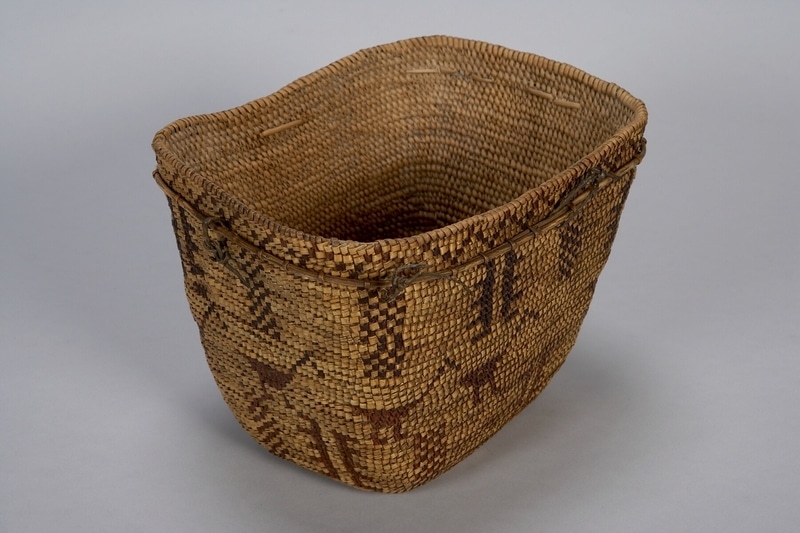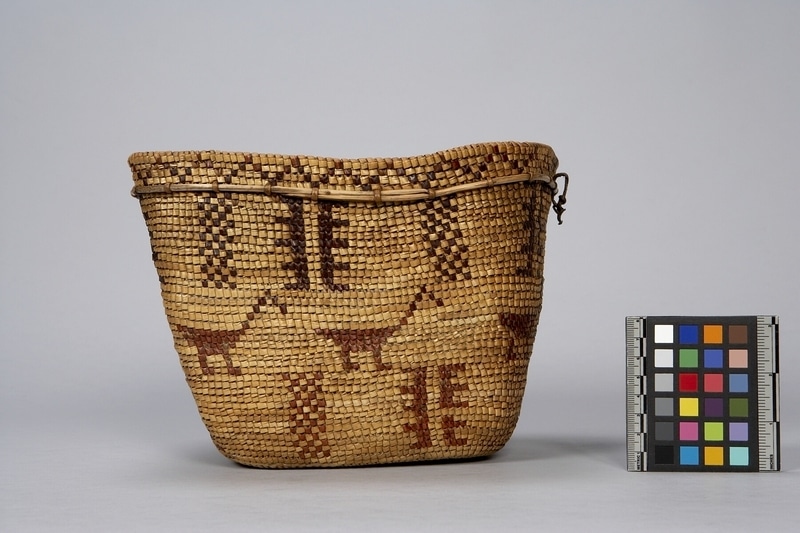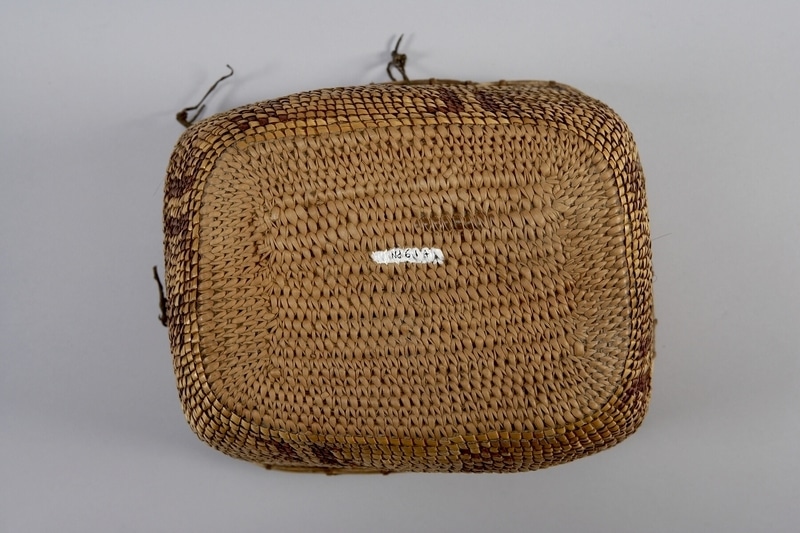Basket Item Number: Nd614 from the MOA: University of British Columbia



Description
Coiled basket with bifurcated stitches; parallel splint base construction; fully imbricated. The design rows, from bottom to top: geometric shapes alternating with checkerboard stripes; animal shapes; geometric shapes alternating with checkerboard stripes; zigzag pattern along rim. Patterns in dark red on reed background. Two hide ties.
History Of Use
Coiled baskets in a range of sizes, embellished with distinctive patterns and motifs of birds, animals, and humans, have long been made and used by the Tsilhqot’in people. Spruce roots are usually preferred over cedar roots as the foundation for these strong and functional containers, which are often made in a flared, burden-basket form. Unique to Tsilhqot’in baskets is the strengthening rib of wood or other material tied on the outside, below the rim, to provide an attachment for a tumpline. On this basket, the inventive maker used pieces of telegraph wire left over from the Yukon Telegraph Line -- a project that was started by Americans in the 1860s and abandoned when the British succeeded in laying the Trans-Atlantic cable. Baskets were used extensively for carrying, storage and cooking, as well as for trade and sale to non-Indigenous people.
Specific Techniques
This basket is coiled of split and bundled spruce-tree roots, stitched together by long, fine strands of spruce root. Beginning at the base of the basket, the weaver gradually builds up the form out of a continuous coil, stitching the upper layer to the coil below. Each stitch splits the one directly below it as the root is drawn through the coil. At the same time, the weaver folds or imbricates strands of grass and bark into each stitch on the outside of the basket, creating dark patterns on a light background.
Iconographic Meaning
The basket designs reflect the local environment and culture; the depiction of animals and other seasonal activities on the baskets resemble pictographs and petroglyphs found in Tsilhqot’in territory [Linda Smith, Tsilhqot’in, 2019].
Item History
- Made in British Columbia, Canada between 1860 and 1880
- Collected between 1885 and 1911
- Owned by Anna J. Beecher
- Owned by Frederick L. Beecher before 1952
- Received from Frederick L. Beecher (Donor) during 1952
What
- Name
- Basket
- Identification Number
- Nd614
- Type of Item
- basket
- Material
- spruce root, reed grass, wood, rawhide skin and water birch bark
- Manufacturing Technique
- coiled and imbricated
- Overall
- height 17.3 cm, width 24.1 cm, depth 19.1 cm
Who
- Culture
- Tsilhqot'in
- Previous Owner
- Anna J. Beecher and Frederick L. Beecher
- Received from
- Frederick L. Beecher (Donor)
Where
- Holding Institution
- MOA: University of British Columbia
- Made in
- British Columbia, Canada
When
- Creation Date
- between 1860 and 1880
- Collection Date
- between 1885 and 1911
- Ownership Date
- before 1952
- Acquisition Date
- during 1952
Other
- Item Classes
- basketry
- Condition
- good
- Accession Number
- 2004/0189